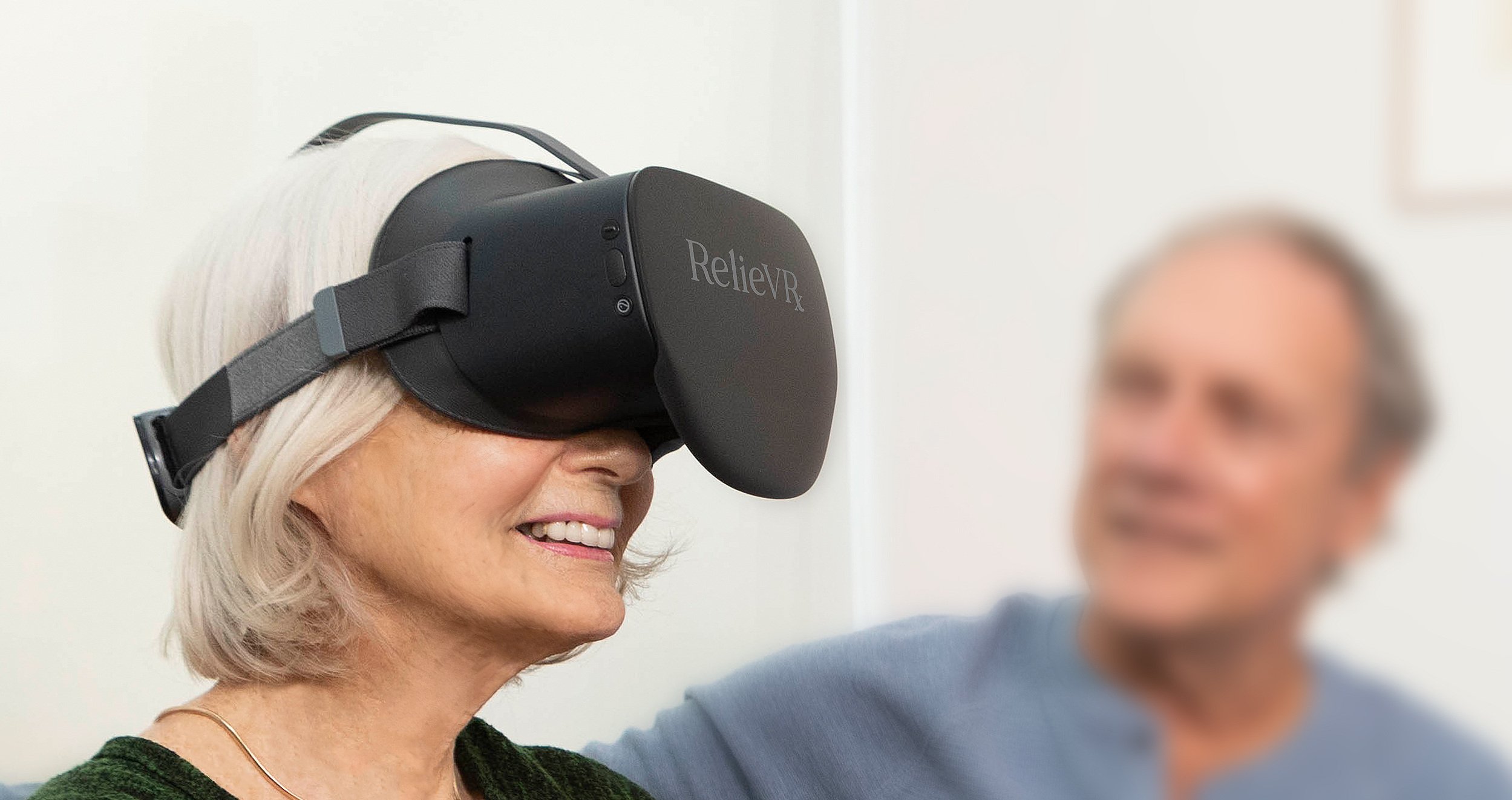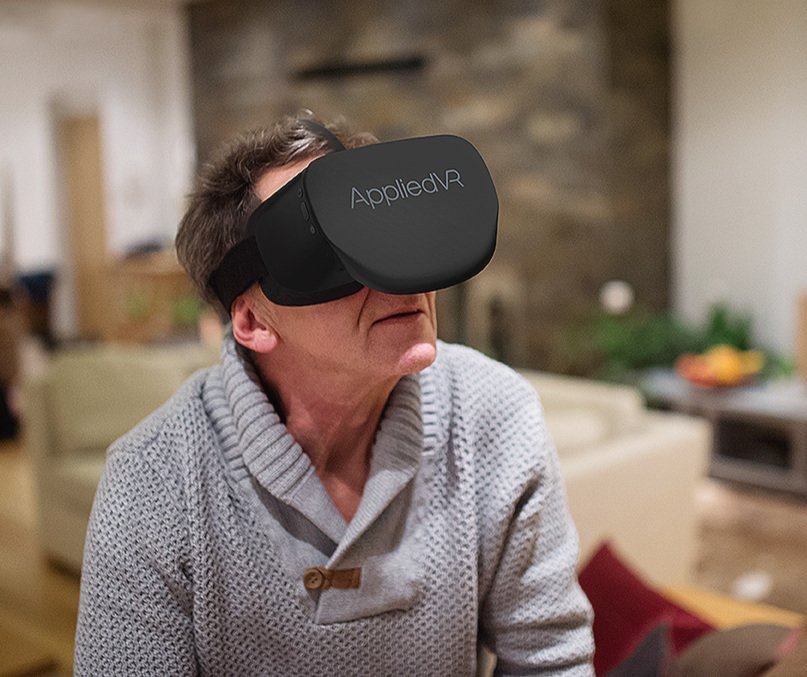Seniors Surprisingly Eager To Try Virtual Reality Therapy for Pain
/By Pat Anson, PNN Editor
When it comes to using new technology or acquiring new skills, older people have a reputation for being a little slow on the uptake. A Baby Boomer nearing 70, for example, might not rush out to buy the latest iPhone, while someone from GenZ or a Millennial would.
A new study of virtual reality (VR) therapy is proving how misguided that assumption is. Older people can indeed learn new things and benefit from them.
In a secondary analysis of a placebo controlled clinical trial, people over 65 were significantly more likely to use RelieVRx, a virtual reality program that distracts patients with back pain by immersing them in a “virtual” environment where they can swim with dolphins, play games or enjoy beautiful scenery.
A demographically diverse group of over 1,000 patients with chronic low back pain participated in the 8-week trial, with the goal of spending a few minutes at home each day watching a RelieVRx program.
By the end of the study, pain scores were reduced by an average of 2 points on a zero to 10 pain scale.
The positive results were across the board, regardless of a person’s age, sex, ethnicity, income or education.
What stood out to researchers is that seniors were significantly more likely to use the devices daily – 47 times on average – compared to those under age 65 (37.6 times)
APPLIEDVR IMAGE
“We had the opportunity to do a deeper dive, and really see how the results were unfolding in younger adults versus older adults, and really found very good engagement with older adults 65 or older,” says Beth Darnall, PhD, Chief Science Advisor for AppliedVR, which makes the RelieVRx headset and programming.
“What's important about this study and also interesting is that it challenges a very common misperception about older adults. That older people are low tech, disinterested in engaging with newer innovations. We actually saw great engagement among the older adults, as well as a great reduction in symptoms. It suggests that older adults are much more receptive to this type of an approach and that it's also very effective in this population.”
There are a few caveats to the findings. Many older people are retired and have more time on their hands to participate in a home-based study like this. And since all the patients were recruited online, they may have already been tech savvy enough to wear the VR headset and make it work for them.
RelieVRx is currently being used in hundreds of hospitals and in the Veterans Affairs (VA) system. Patients who’ve tried VR seem to like it, regardless of their backgrounds.
“The VA patients are generally pretty different than the rest of the civilian populations,” says Josh Sackman, president and co-founder of AppliedVR. “The usage is fairly consistent, even with a VA patient prescribed by a doctor who has no exposure to what VR is ahead of time.”
VR therapy is a form of mindfulness or cognitive behavioral therapy. It doesn’t cure or relieve physical pain, but distracts patients long enough that their symptoms seem less severe. A 2022 study found that VR therapy has long-lasting benefits up to six months after treatment stopped.
The FDA has authorized the marketing of EaseVRx for chronic low back pain in adults, the first medical device of its kind to receive that designation. EaseVRx is only available by prescription and can’t be purchased directly by consumers.
In the coming months, AppliedVR hopes to expand coverage of the device through Medicare, Medicaid, and at least one large commercial insurer.









